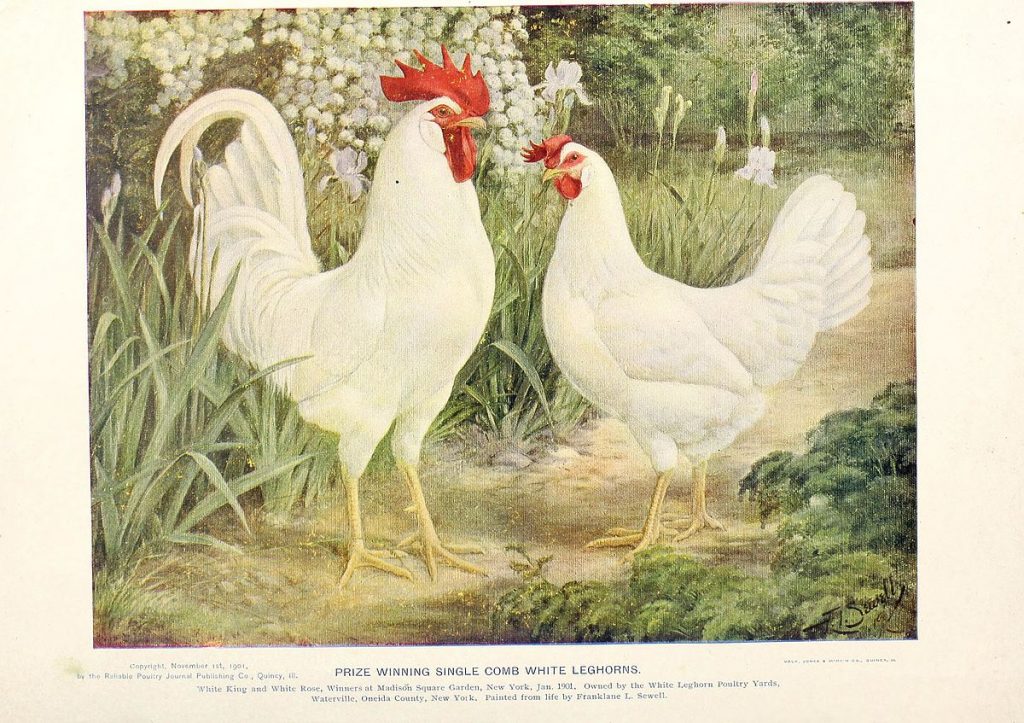The History of Eggs
7500 B.C. – Chickens thought to have been domesticated prior to 7500 B.C.
-
- Eggs have been valued as food since prehistory.
3200 B.C. – Wildfowl were being domesticated. (Documented in East Indian history)
1400 B.C. – Fowl were laying eggs for humans (Recorded in Egyptian & Chinese history)
1420 BCE – In Egypt, the tomb of Horemheb shows the depiction of a man carrying bowls of ostrich eggs and other large eggs as offerings.
-
- The “other eggs” are thought to be pelican eggs.
800 B.C. – Chickens arrive in Greece.
-
- Previously, Quail eggs were the primary egg consumed.
600 B.C. – Europe domesticates hens
300 B.C. – Egypt and China figured out how to incubate chicken eggs in warm clay ovens.
-
- By doing this the hens didn’t have to sit on their eggs to hatch them and could instead lay more eggs.
The History of Egg farming in America
1490s – On his second trip, Columbus brought the first chickens related to those now in egg production.
-
- There is evidence of native fowl in the Americas prior to his arrival.
1900s – In the U.S., Egg production was a backyard affair that supplied only the family.
-
- Any extras would be sold at farmer’s markets.
- As eggs became profitable, farm flocks began to reach ~400 hens.
1911 – Joseph Coyle in Smithers, British Columbia created the first egg cartons out of paper.
1920s – Hens were free-roaming on farms and were vulnerable to predators, weather, and diseases.
-
- Stronger and healthier birds were chosen for selective breeding.
Mortality rate: 40%
Eggs per year/hen: 150
1930s – Hen houses gain popularity as they resulted in healthier birds. Kept out of the weather and away from predators and parasite carriers such as rodents.
-
- Problems with sanitation, waste control, and flock dynamics still remained.
Mortality rate: 18%
1940s – Raised wire flooring in hen houses improved sanitation.
-
- Humans and birds kept away from waste and made cleaning easier
- Flock dynamic was altered with separation of aggressive and passive hens and specific feeding schedules.
Mortality rate: 5%
Eggs per year/hen: 250
1950s – Housing systems became semi-automatic as egg output increased.
-
- Conveyor belts were added to hen houses to collect eggs and to carry them to the washer immediately after being laid.
1960s – Egg farming shifts to a large scale commercial process.
-
- With all the benefits of the previous 450 years of innovation, the health of hens was greatly improved. This resulted in a surge in egg production.
- The increase in egg output created a demand for faster processing =automization and mechanization.
- Labour costs were reduced due to this which resulted in lower prices for the consumer.
- Improved equal feeding resulted in healthier hens that produced uniform nutrient quality eggs
Today – The U.S. produces 75 billion eggs a year.
-
- ~ 300 million laying hens in the U.S. producing ~300 eggs a year.
- ~ 60% of eggs sold to the consumer.
- ~ 9% of eggs sold to the foodservice industry.
- The rest of the eggs produced are used as ingredients in other products.
- Eg. Mayonnaise.
Fun Facts
- Eggs contain the highest quality protein you can buy.

- Spin an egg to find out if it’s hard-boiled or raw.
- Egg spins easily= hard-cooked
- Wobbles = raw.
- Egg yolks are one of the few foods that are a natural source of Vitamin D
- “Eggs age more in one day at room temperature than in one week in the refrigerator” – Thinkegg.com
- In the U.S. the Single-Comb White Leghorns is often the species used for egg-laying.
- In the Middle Ages, Easter eggs and eggs on the Seder plates became the norm. Both events occur in the spring when chicken’s naturally laid their eggs. Nowadays, with indoor coops and electric heating and lights, chicken’s lay eggs year-round.
- The word Mayonnaise probably comes from the medieval French word for yolk, moyeu.
- In 2017, the world’s largest producer of eggs was China with 31.3 million tonnes.
- The total worldwide the same year was 80.1 million tonnes.
- Eggs are “candled” to check their quality.
- Candling is shining a bright light directly through the egg to check if the embryo has been fertilized.
-
-

Candling; Unfertilized vs. Fertilized egg
-
https://www.incredibleegg.org/egg-nutrition/#history-of-the-egg https://en.wikipedia.org/wiki/Egg_as_food#History https://quatr.us/southeast-asia/history-eggs-eggs-come.htm https://www.chinovalleyranchers.com/the-history-of-the-egg/ https://www.bonappetit.com/story/why-do-we-eat-eggs-for-breakfast https://www.smithsonianmag.com/history/how-the-chicken-conquered-the-world-87583657/ https://thinkegg.com/index.php/21-2/ https://commons.wikimedia.org/wiki/File:The_leghorns,_brown,_white,_black_buff_and_duckwing_-_An_illustrated_leghorn_standard,_with_a_treatise_on_judging_leghorns,_and_complete_instructions_on_breeding,_mating_and_exhibiting_(1904)_(14596202768).jpg


So is this a case where factory farming is a benefit to the animal, or just to humans … something for our last couple of classes!